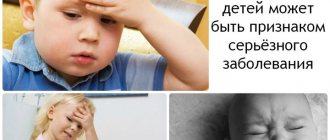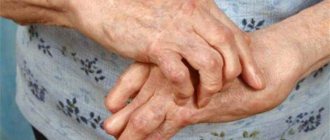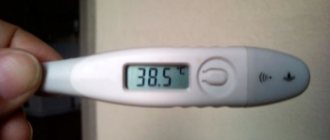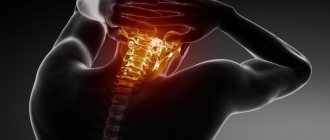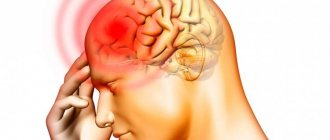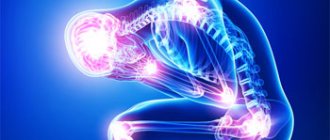What is polio?
What is polio? This disease is also called infantile spinal palsy or Heine-Medin disease. What it is? This is a contagious infectious disease that primarily affects the gray matter of the spinal cord. In principle, the main poliovirus, poliovirus hominis, affects the entire nervous system, the mucous membrane of the nasopharynx and intestines.
The virus enters the body through the fecal-oral route. It is carried into the mouth by hand, where it begins to multiply in the nasopharynx or tonsils. Then it penetrates the digestive tract, where it can be found in fecal matter. Through the lymph nodes (mainly mesenteric and cervical), the virus enters the bloodstream, after which it affects the brain or spinal cord.
Types of polio are divided according to the clinical picture that manifests itself:
- Abortive (failed, minor disease) - is asymptomatic, damage to the nervous system does not occur.
- Non-paralytic (pre-paralytic).
- Meningeal.
- Paralytic – develops against the background of previous types of polio.
- Spinal.
- Potina - damage to the nuclei of the cranial nerves, paralysis of the masticatory and facial muscles.
- Bulbar - occurs more often in adults than in children. Spinal phenomena occur and the brain is involved.
- Encephalitic - rarely occurs.
- Peripheral.
- Non-hardware – a person is not sick, but is a virus carrier.
They are divided into stages of development:
- Preparalytic;
- Paralytic;
- Restorative;
- Residual.
According to the flow forms, they are distinguished:
- Acute – manifested by vivid symptoms;
- Chronic – asymptomatic and with exacerbations.
go to top
Diagnostics
The diagnosis of poliomyelitis is established based on the clinical picture, epidemiological prerequisites (contact with patients with poliomyelitis, summer time) and laboratory data. Diagnosis of non-paralytic forms of polio and its pre-paralytic stage, before the appearance of movement disorders, is very difficult. If polio is suspected, feces and blood should be tested for the presence of the virus.
Laboratory tests for poliomyelitis consist of determining the antibody titer in paired sera. Serum collection interval: three to four weeks. Preferred methods: RSC, as well as neutralization reaction (in the form of a modified color test). The causative agent of polio is isolated on tissue cultures from the feces of patients and from nasopharyngeal swabs.
Symptoms and signs of nervous system polio
In 95% of cases, signs of polio in the nervous system do not appear. Symptoms of pharyngitis or gastroenteritis may appear here. In 8% of cases the patient may feel unwell. In 2%, polio provokes meningitis without causing paralysis. In 0.1% paralysis occurs.
Let's look at the symptoms of polio according to its types:
- Non-paralytic:
- The temperature rises to 40ºС;
- Muscle pain appears;
- There is a general feeling of malaise;
- Appetite decreases;
- Gag reflexes and nausea appear;
- Pain in the head and throat is felt;
- Irritability and emotional instability appear;
- Muscle rigidity develops in the neck and back;
- Meningitis is actively developing;
- Symptoms may last for 2 weeks and then subside.
- Abortive:
- The temperature rises to 38ºС;
- Feeling lethargic, weak, and generally unwell;
- Pain is felt in the head and stomach;
- A cough and runny nose appears;
- A gag reflex appears;
- The throat becomes red;
- Catarrhal tonsillitis, gastroenteritis, enterocolitis develop;
- Intestinal toxicosis is expressed, similar to dysentery;
- Symptoms last up to a week;
- Has a cholera-like course.
- Meningeal:
- The temperature rises;
- Malaise and weakness appear;
- Appetite decreases;
- Pain in the abdomen and head of varying intensity appears;
- Vomiting appears;
- Cough and runny nose occur;
- The throat becomes red, the tonsils and palate become coated;
- After 2 days, these symptoms disappear, and after another 3, an exacerbation occurs with new symptoms, which are listed below.
- Severe headaches occur;
- The general condition decreases sharply;
- Pain appears in the back and limbs (usually in the legs);
- Severe vomiting occurs. The symptoms resemble meningitis.
- Paralytic:
- Convulsions in muscle contractions, pain and muscle weakness appear;
- The temperature that developed with previous types of polio gradually decreases;
- Weakness in the muscles develops through deformation (this mainly affects the lower extremities);
- Muscle tone and reflexivity subsides;
- Paresthesia develops (numbness, the appearance of “goosebumps” and other sensitivity disorders);
- Gradually, the symptoms go away, muscle pain disappears, but deformities, paralysis, atrophy, and curvature of the spine remain. The person becomes disabled.
- Spinal:
- The temperature rises to 40ºС;
- Weakness, drowsiness, lethargy appear;
- Muscle weakness (adynamia) appears;
- Headaches and increased excitability appear;
- Sudden pain in the legs;
- Pain and spasms appear in the muscles of the neck and back;
- The symptoms for the first couple of days resemble rhinitis, bronchitis, pharyngitis;
- Asymmetry of paralysis appears;
- Muscle tone and tendon reflexivity decrease;
- The restoration of motor activity takes a long time and is uneven.
- Potinny:
- Asymmetry of the facial muscles appears;
- The corner of the mouth is pulled towards the healthy side;
- The eyelids close partially;
- Nasolabial folds are smoothed;
- The palpebral fissure widens;
- There are no horizontal wrinkles on the forehead.
- Bulbar:
- There are difficulties in swallowing;
- The voice changes: it becomes hoarse, weak, vibrating;
- Vasomotor disturbances appear;
- Breathing becomes difficult, slow and shallow;
- Hiccups appear;
- The skin and mucous membranes become blue;
- The patient becomes anxious and restless;
- Vascular insufficiency develops.
- Encephalitic:
- Consciousness becomes confused;
- Voluntary movements become limited;
- Convulsive syndrome develops;
- Aphasia develops - a speech disorder;
- Sudden involuntary movements of various muscle groups appear;
- Stupor and coma appear;
- Symptoms of vegetative-vascular dystonia develop.
go to top
general information
Childhood polio is much more common than adult polio. The virus often affects children under ten years of age, so they are delayed in development, and their limbs are subject to severe deformation.
Heine-Medina disease in most cases occurs in a latent form, without causing severe neurological disorders. Clinical signs are typical for one percent of all infected people. The disease is detected 2-3 weeks after its onset. The probability of death is quite low, and paralysis of the respiratory center leads to it.
The disease began to be studied in 1840, and the first effective vaccine was developed in the 1950s. Due to several outbreaks of the disease in the 20th century, WHO launched a program to vaccinate the population. Since then, the risk of infection has decreased by 99%. And regions such as Europe, America and the Western Pacific are considered virus-eradicated zones.
Source of the disease
Enterovirus is a spherical virus that belongs to the family Picovrnaviridae. Its dimensions vary from 27 to 30 nm. It is he who causes the disease. Its structure is a chain of RNA molecules that carry data about the pathogen, enclosed in a protein shell. The virus contains no fat, which makes it resistant to acidic environments and the influence of solvents.
The activity of the polio virus in the external environment is about 3 months in water, and up to six months in feces. The infectious properties at low temperatures remain for quite a long time, and when boiled, under ultraviolet light and under the influence of disinfectants, the virus quickly dies.
The structure of the protein shell differs; on this basis, three strains (I, II, III) of the virus were isolated. When vaccinated and infected, the body develops immunity, which provides lifelong protection against re-infection. But such an immune response cannot protect against other strains of polio, so it is not ideal. Often, infection with the first type of virus leads to complications of a paralytic nature.
Only humans are the carrier of the virus; sometimes primates are also infected, but they cannot be the source of infection.
Poliovirus affects the gastrointestinal tract; after penetration into the mucous membranes of the tract, it, using the structural cells of the body, begins to multiply en masse. When the virus collects the required number of viral particles, the pathogen will begin to spread, affecting the intestinal lymphoid tissue.
Viremia (entry of the virus into the blood) begins 3-4 days after infection. Usually during this period the body produces antibodies that effectively destroy it, so the disease begins to develop in an asymptomatic form. But sometimes, with massive viremia, the disease takes on a more severe form, in which the virus penetrates the tissues of the brain and spinal cord. The mechanism of infection of the central nervous system has not yet been elucidated. According to medical scientists, the virus is carried by the bloodstream from muscle nerve endings to the brain.
Poliovirus remains in brain tissue for several days. After this time, it is impossible to detect it, but despite this, the inflammation process does not stop and can last 2-3 months, infecting more and more motor and autonomic neurons.
Causes of polio
You can become infected not only from a sick person. Due to the fact that the virus is resistant to external factors, it can enter the body in other ways.
There is a concept of the mechanism and methods of transmission of infection. The mechanism is understood as the way in which the pathogen, from the beginning of its release into the environment, moves into the susceptible human body. The poliomyelitis virus has a fecal-oral transmission mechanism. This means that a sick person releases the pathogen into the external environment along with urine, vomit and feces.
And the path is the factor that ensures the interaction of the virus with the point of entry into the body of the infected person.
There are three routes of transmission of polio:
- In terms of epidemiology, the most important is the food route . In this case, the infection is transmitted by contamination of food products with infected particles when sanitary control and hygiene rules are not observed.
- The water route is rarely identified and involves the consumption of contaminated water. But if there is a large release of wastewater and sewage into water sources, this route may well become a source of infection.
- Household means infection through contact with household items that contain virus particles. This route of transmission is not dangerous in itself. If you follow the rules of personal hygiene, the virus from your hands will not be able to get into the environment suitable for it - the oral mucous membranes.
Sometimes an aerosol route of transmission is identified - infection by particles that the patient releases when coughing, talking or sneezing. But this path can cause harm only at the initial stage of the disease and only with very close contact.
Susceptibility and risk factors
The susceptibility of an organism is its ability to react to any foreign invasion. Human natural susceptibility to polio is very high. Often, a person simply becomes a carrier of the virus without showing clinical or pathological symptoms. Symptoms manifest themselves very rarely, and the paralytic picture is observed in 1-10 cases out of 1000.
There are a number of factors that can aggravate the course of the disease. Among them are the following:
- Floor. The risk of infection is the same for both sexes until puberty. With age, females aged 18-25 years without immunity are more at risk of infection. PPS (myelitis) is also observed more often in women.
- Age. Children and adolescents are mainly susceptible to the disease, since their bodies are most susceptible to infectious pathogens, and they come into more contact with contaminated materials.
- Pregnancy period. A woman’s body during such a period is very susceptible to infection.
- Recent tonsil removal may cause damage to the brain stem.
- According to research, the paralytic form of the disease often affects the limb that received intramuscular injections shortly before infection.
Live weakened virus
There are two types of vaccination. The first uses a live, attenuated virus. The vaccine has advantages compared to using an inactivated virus. But there are cases that it becomes the cause of the development of the disease. That is why a number of countries do not use it. It is worth considering that the paralytic form of polio caused by vaccination is so small that the probability of developing the disease is 1 case in 2.6 million vaccinated people.
The live virus is introduced into the body through the mouth. Due to this, it follows a natural path and is capable of inducing the synthesis of not only blood antibodies, but also secretory ones, which protect against re-infection through the gastrointestinal mucosa.
After receiving the first dose of the vaccine, the disease develops within 7-14 days. Often, the occurrence of polio is associated with immunodeficiency of the person who was vaccinated.
Treatment
There is no cure for polio. This is where timely vaccination of the child when he is still small becomes important. Additional vaccinations are possible for those who are susceptible to poliovirus infection.
How to treat polio? Treatment is carried out in hospital for up to 40 days. Physiotherapeutic procedures performed by an orthopedist include:
- Therapeutic gymnastics and exercises;
- Massage;
- Peace;
- Water procedures;
- UHF;
- Electrical stimulation;
- Paraffin applications.
What medications are used in treatment? Treatment is symptomatic, that is, it eliminates the symptoms, but not the cause:
- Analgesics;
- Antiviral drugs;
- Immunoglobulin intravenously;
- Antipyretics;
- Decongestants, painkillers, sedatives;
- Antihypoxants.
At the end of treatment, orthopedic treatment is carried out to eliminate deformities and contractures. If respiratory failure develops, artificial ventilation is prescribed.
Of course, treatment is not carried out at home. No folk remedies will help in healing. Diet and other measures will not help either. Here you need to contact a neurologist at the first manifestations of the disease.
go to top
How the virus spreads
How is the polio virus transmitted? The carrier of the pathogen is an infected person, or less often - flies that transport the poliovirus on themselves. Most often, infection occurs through the oral-fecal route, that is, the virus can be picked up through unwashed hands, contaminated food or common household items. Poliomyelitis is also transmitted by airborne droplets. The virus is widespread throughout the world. But we encounter such cases extremely rarely in our lives, thanks to widespread vaccination. It was she who saved developed countries from the insidious disease, but in African countries and South Asia outbreaks are still epidemic in nature to this day. If you plan to travel abroad, but have never been vaccinated against polio, you must contact a medical facility for the appropriate vaccination.
Lifespan
How long do polio patients live? Mortality is 6%, life expectancy is reduced to 20% with bulbar palsy. In the non-paralytic form, patients recover completely. And the prognosis for the paralytic form is less favorable. Patients remain disabled in 2/3 of cases. In the absence of treatment, atrophy of the limbs develops and the person becomes disabled.
What preventive actions can help prevent the disease? Only vaccination, which is carried out in the first years of a person’s life. If he gets sick, treatment remains for life. The disease is incurable.
Which doctor should I contact?
The only effective method of preventing polio is vaccination.
If signs of an infectious disease appear, accompanied by progressive weakness in the limbs, it is necessary to urgently contact an infectious disease specialist. During the recovery period, which lasts a long time, the role of a physiotherapist, a specialist in physical therapy and massage is important.
Rating: (votes - 3 , average: 2.67 out of 5)
Still no cure
Every person needs to know how polio is transmitted and what needs to be done to prevent the disease, because there is no cure for polio. There are no antibiotics for this virus. It tolerates cold well, persists in the environment for a long time and is not destroyed by gastric juices. The only weapon capable of defeating the insidious virus is the immunity that the body develops after suffering from an illness or vaccination.



